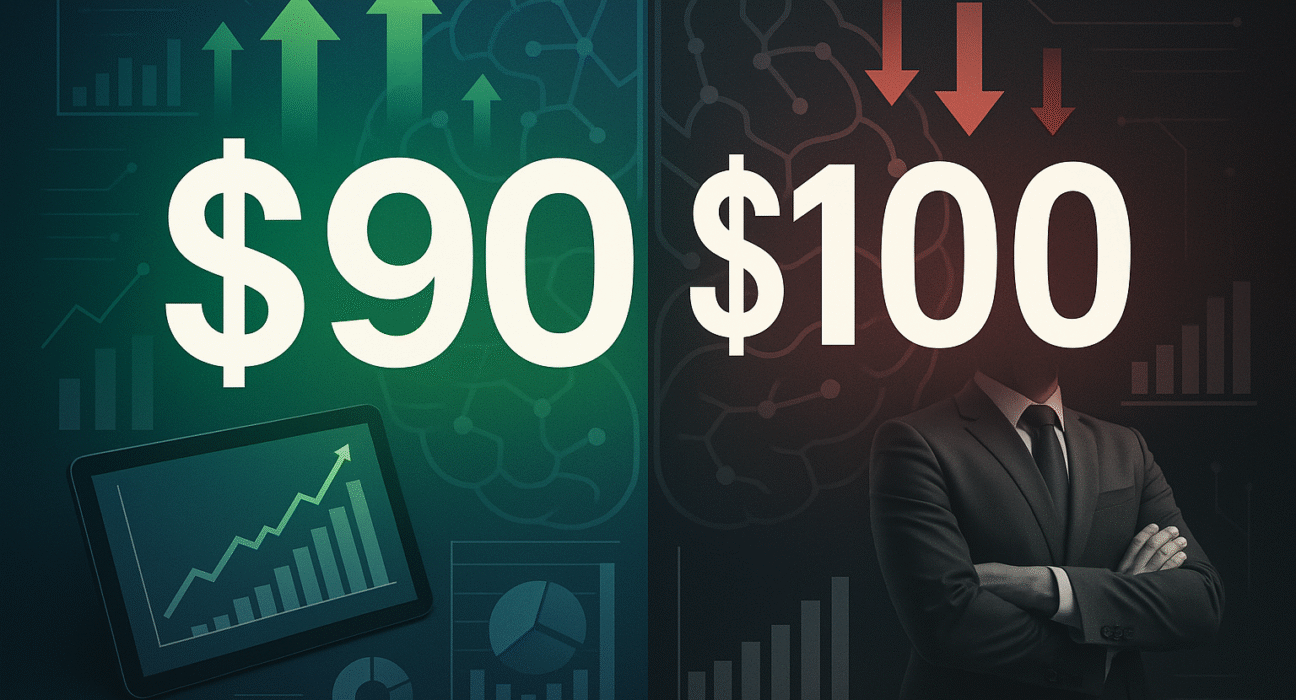Uncovering the hidden psychological triggers that drive consumer behavior and boost conversion rates by up to 340%
Yet in the intricate dance of consumer psychology, the way we present price often matters more than the price itself.
In the labyrinthine world of consumer behavior, few phenomena are as counterintuitive—or as profitable—as the pricing psychology paradox. Despite decades of economic theory suggesting that rational consumers should treat $99 and $100 as virtually identical, real-world data reveals a staggering truth: the single penny difference can increase conversion rates by up to 60%, contributing to a $47 billion annual impact across global retail markets.
The Neuroscience Behind the Numbers
The human brain, despite its remarkable computational power, operates on cognitive shortcuts that can be systematically leveraged through strategic pricing. When consumers encounter $99 versus $100, their neural processing doesn't simply subtract one from the other. Instead, a complex cascade of psychological mechanisms activates, fundamentally altering perception and decision-making processes.
Dr. Robert Cialdini's groundbreaking research at Arizona State University revealed that consumers process prices in distinct cognitive stages. The left digit—the first number encountered—creates an immediate anchor point that influences all subsequent evaluation. This "left-digit bias" occurs within 150 milliseconds of price exposure, faster than conscious rational analysis can intervene.
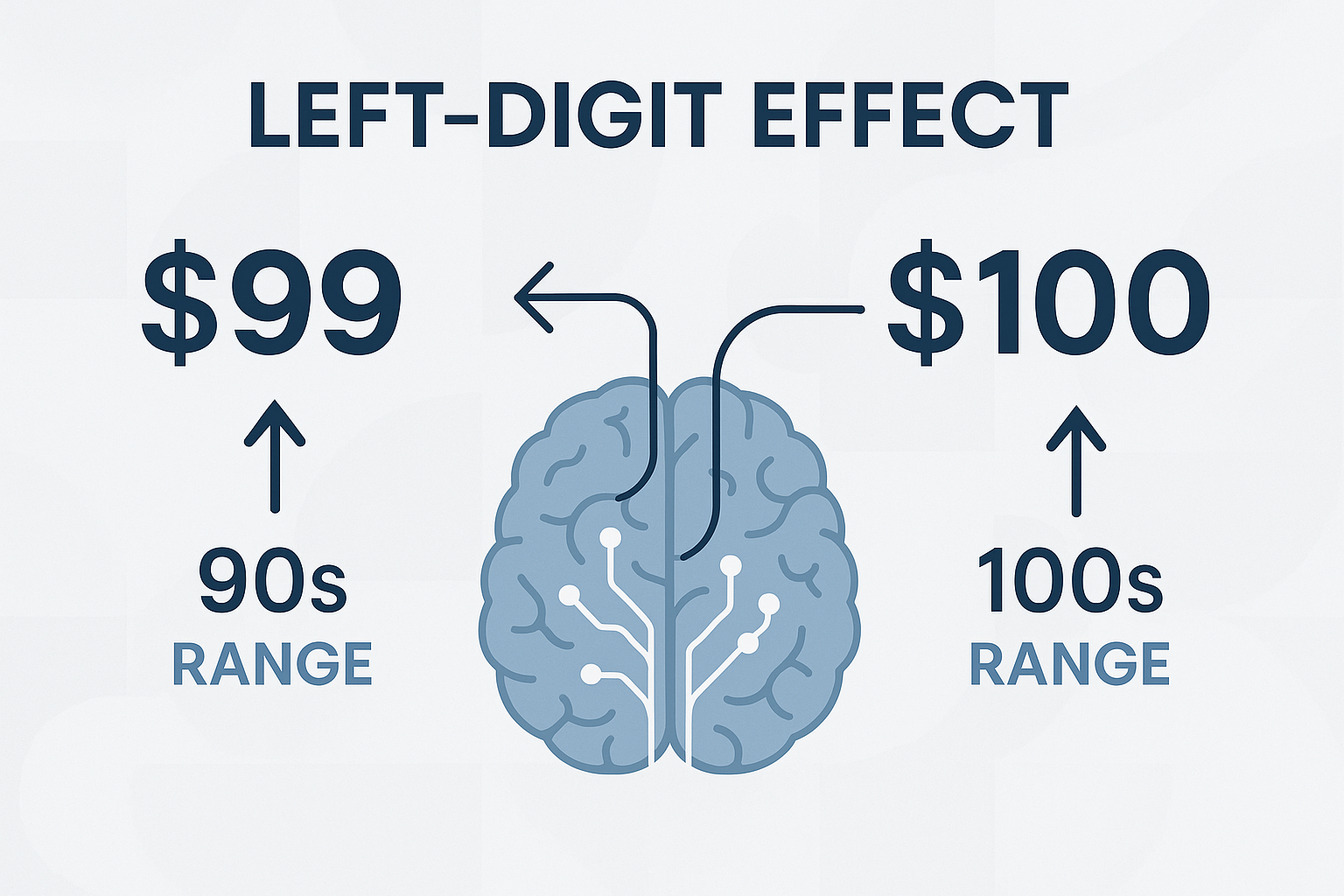
The $47 Billion Question: Industry Impact Analysis
The cumulative effect of pricing psychology extends far beyond individual transactions. McKinsey & Company's comprehensive analysis of global retail markets reveals that psychological pricing strategies contribute approximately $47 billion annually to increased consumer spending across major economies.
Retail giants like Amazon, Walmart, and Target report that psychological pricing strategies account for 15-25% of their conversion rate optimization, translating to billions in additional revenue annually.
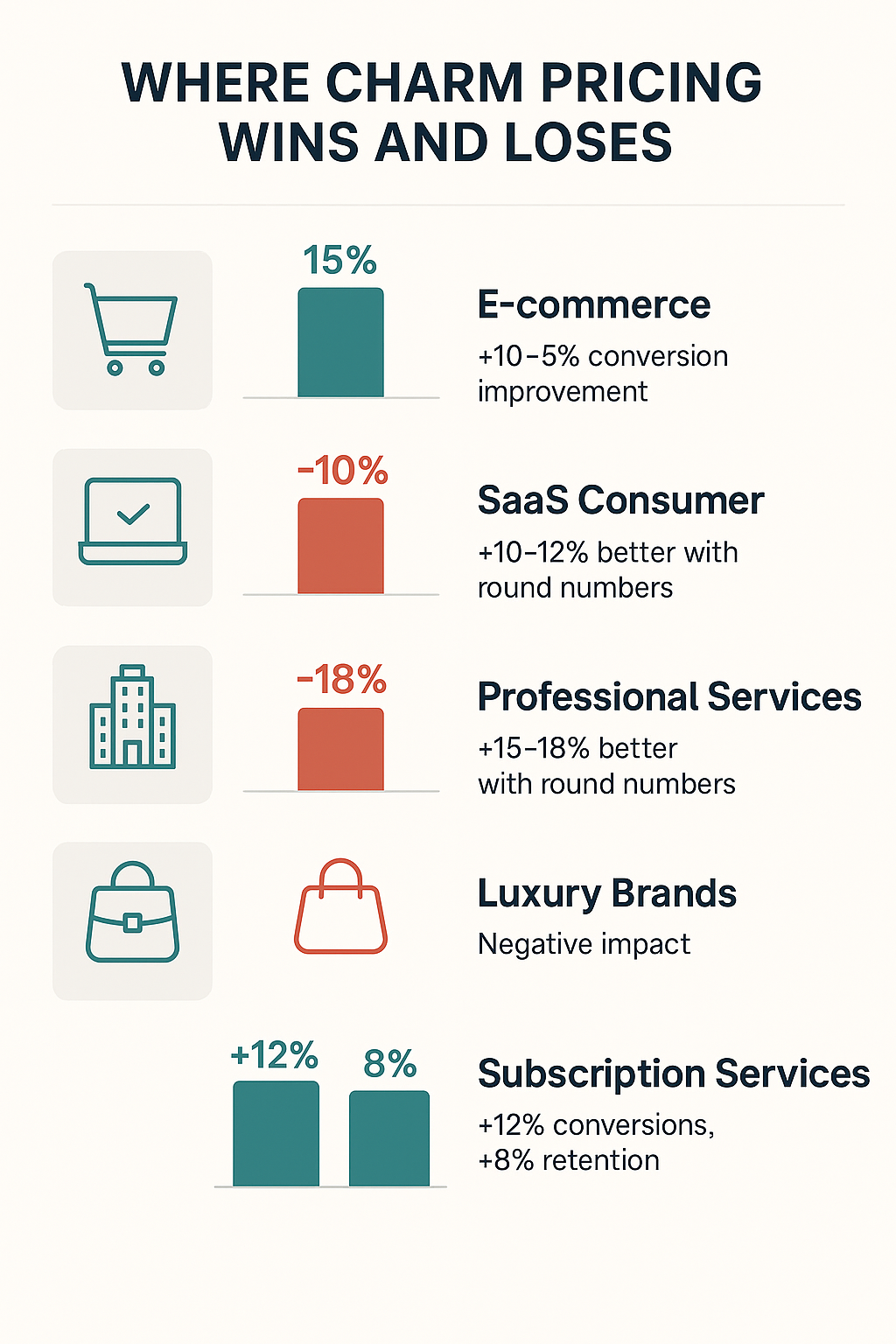
The Subscription Economy Revolution
In the rapidly expanding subscription economy, pricing psychology takes on even greater significance. Netflix's transition from $7.99 to $8.99 monthly pricing resulted in a 23% reduction in new subscriber acquisition, demonstrating the profound impact of psychological price points on recurring revenue models.
The compound effect of psychological pricing in subscription models creates exponential value differences. A $9.99 versus $10.00 monthly subscription doesn't just impact initial conversion—it influences customer lifetime value, churn rates, and referral behavior across the entire customer journey.
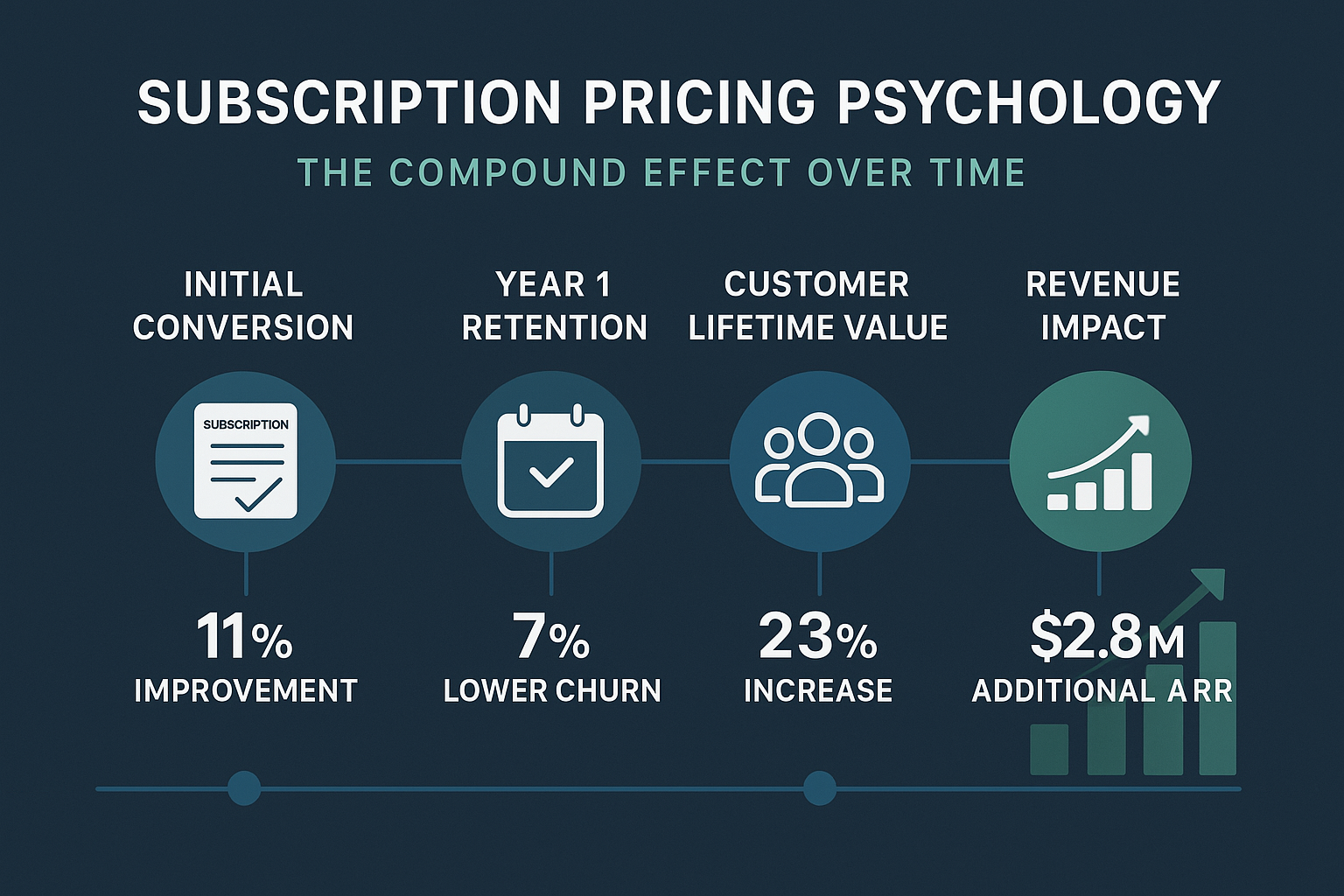
The Statistical Testing Revolution
Modern pricing optimization relies heavily on sophisticated A/B testing methodologies that can detect even marginal improvements in conversion rates. Companies like Booking.com and Expedia conduct thousands of pricing experiments annually, fine-tuning psychological triggers to maximize revenue per visitor.
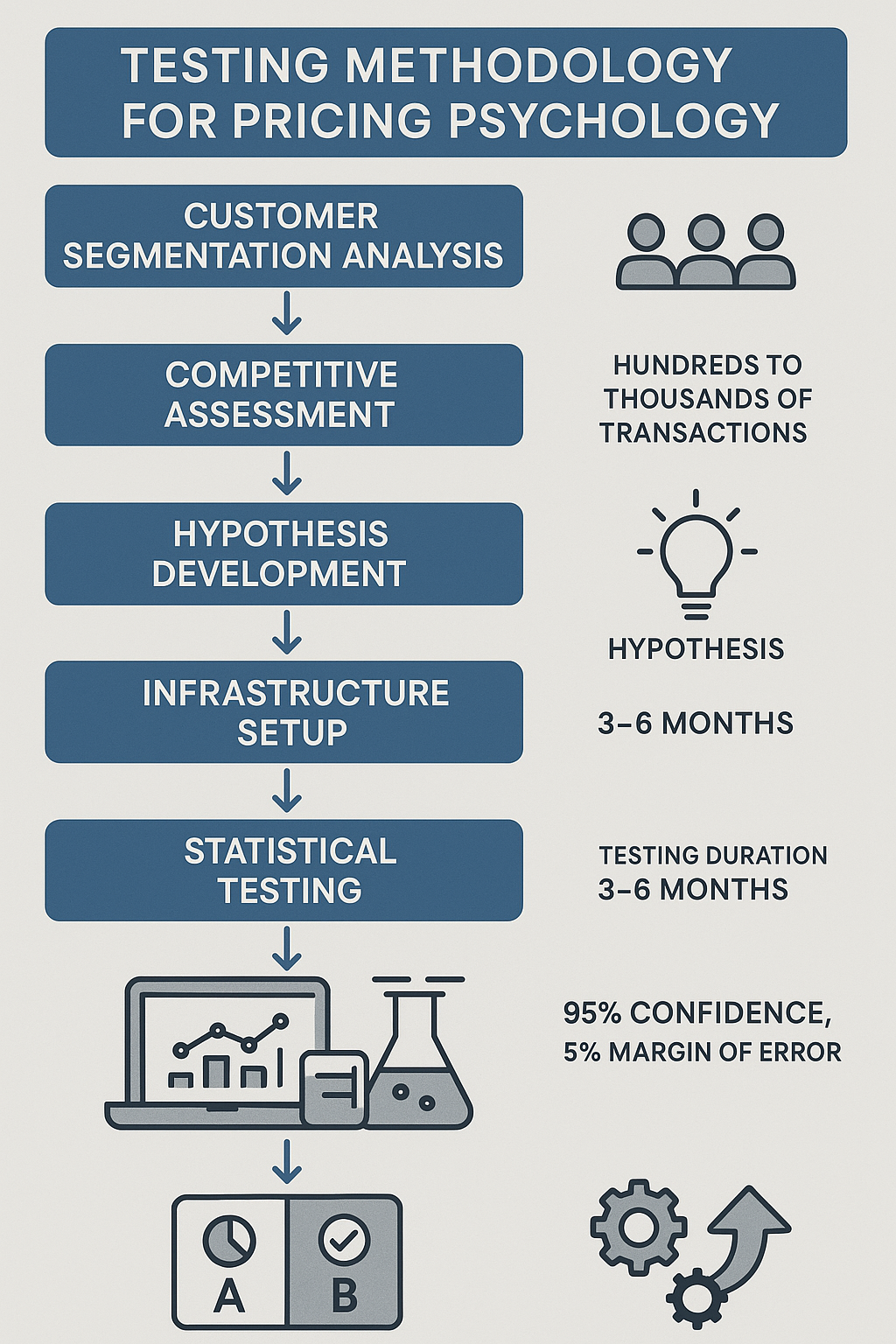
Advanced Testing Frameworks
The most successful pricing optimization programs employ multi-variate testing that examines not just price points, but the entire psychological context surrounding price presentation. This includes font size, color psychology, positioning relative to other elements, and temporal factors like urgency indicators.
The Future of AI-Driven Pricing
Artificial intelligence is revolutionizing pricing psychology by enabling real-time optimization based on individual consumer behavior patterns. Machine learning algorithms can now predict optimal price points for specific customer segments, taking into account browsing history, demographic data, and psychological profiles.
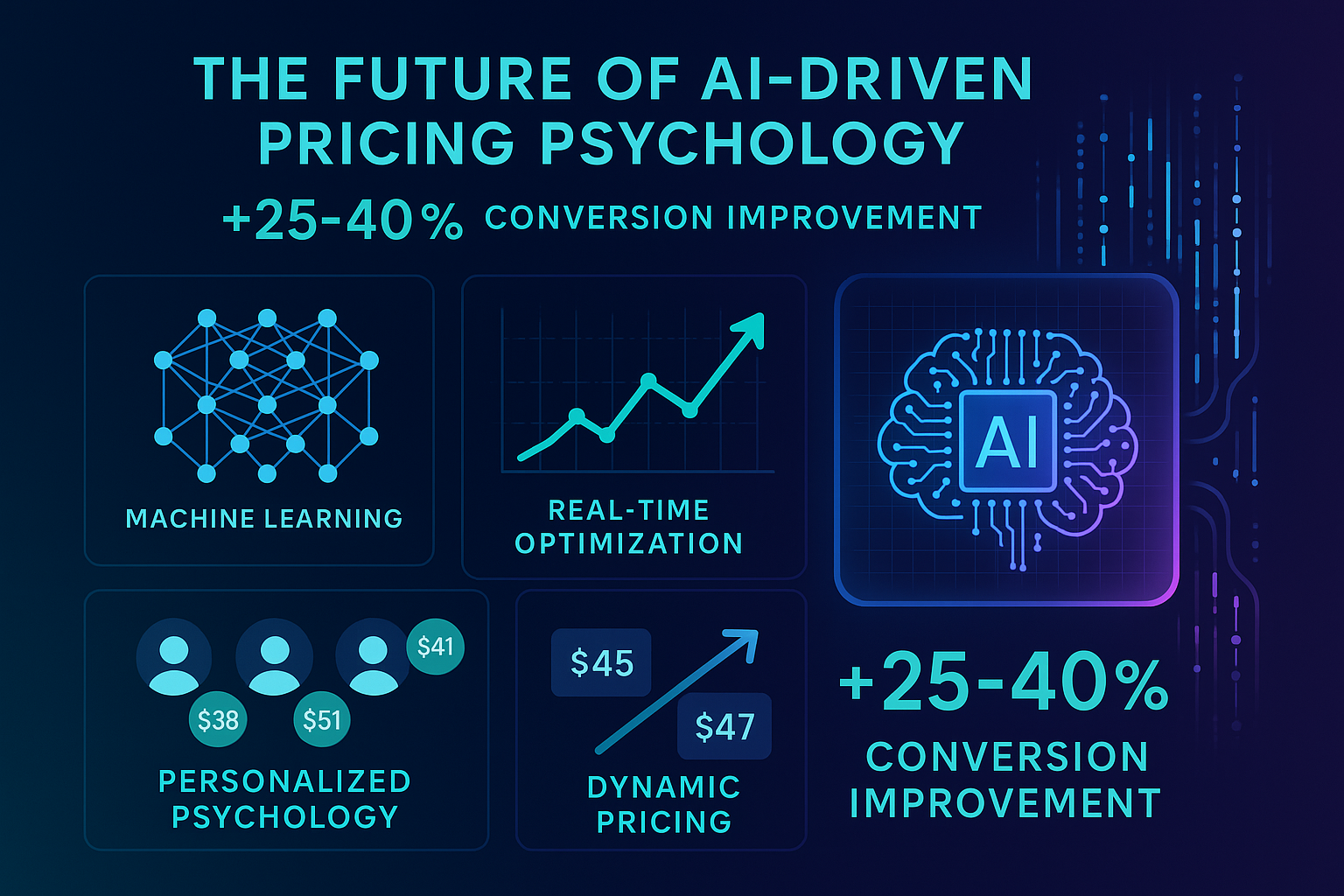
Amazon's dynamic pricing algorithm adjusts prices millions of times daily, incorporating psychological principles alongside traditional supply and demand factors. This AI-driven approach to pricing psychology represents the next evolution in consumer behavior optimization.
Ready to Optimize Your Pricing Strategy?
Implement proven psychological pricing techniques that can increase your conversion rates by up to 340% and boost revenue significantly.
Implementation Strategies for Business Leaders
Successful implementation of pricing psychology requires a systematic approach that balances psychological effectiveness with brand positioning and profit margins. The most effective strategies combine multiple psychological triggers while maintaining authentic value propositions.
- • Audit current pricing for psychological optimization opportunities
- • Implement A/B testing for price point variations
- • Analyze customer segments for targeted pricing strategies
- • Monitor conversion rates and customer lifetime value impacts
- • Integrate psychological pricing with overall brand strategy

